Digital signage systems deliver customized media playlists to one or more digital screens, enabling a network manager to display targeted information to a specific audience at a specific place and time. Relative to traditional signs, digital signage messages can be easily customized, changed out quickly and inexpensively and delivered to many displays at once. Digital signage is often used to present a custom-tailored content mix, including product promotions, timely news, and upcoming events. Screens can be mounted on walls, ceilings, shelving systems, or aisle endcaps, or integrated into freestanding displays and kiosks. Digital signs are used in a wide variety of applications ranging from targeted retail advertising to internal employee communications and remote training.
Digital signs can take many forms, including free-standing towers, flat screens hung from walls and ceilings, electronic displays integrated into end caps, and even small screens on the price channel.
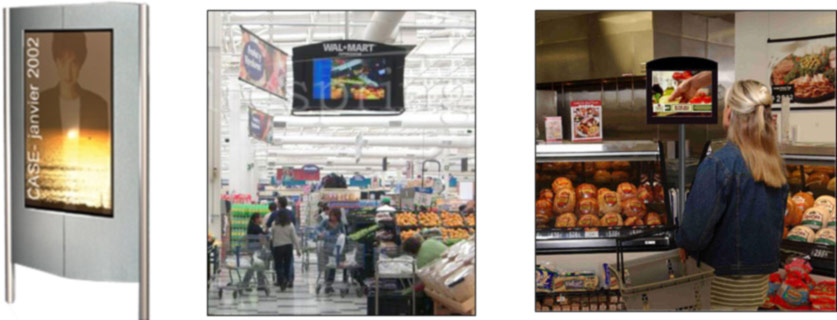
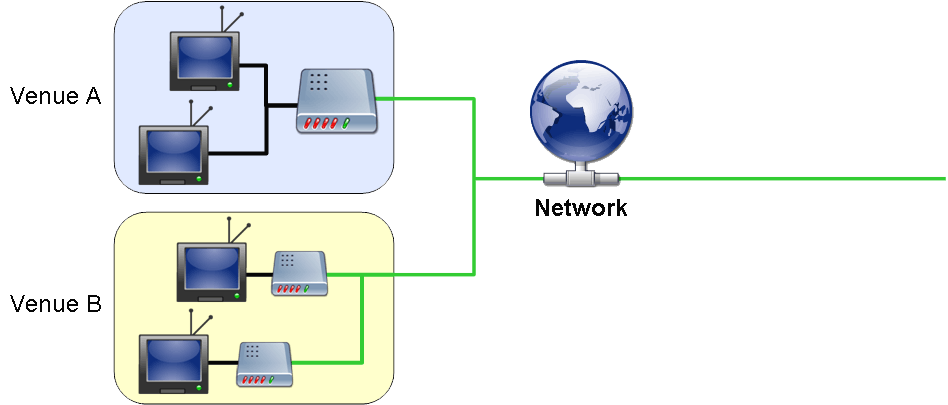
1Deploying a digital signage network typically involves connecting screens at each venue to media players that are in turn connected to the Internet or a local computer network.
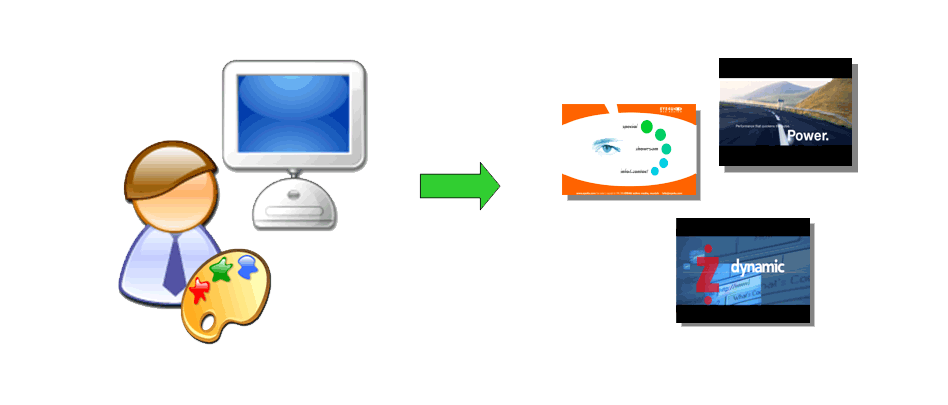
2Your creative personnel, agency or marketing department creates content assets like movies, images, graphs or web pages.
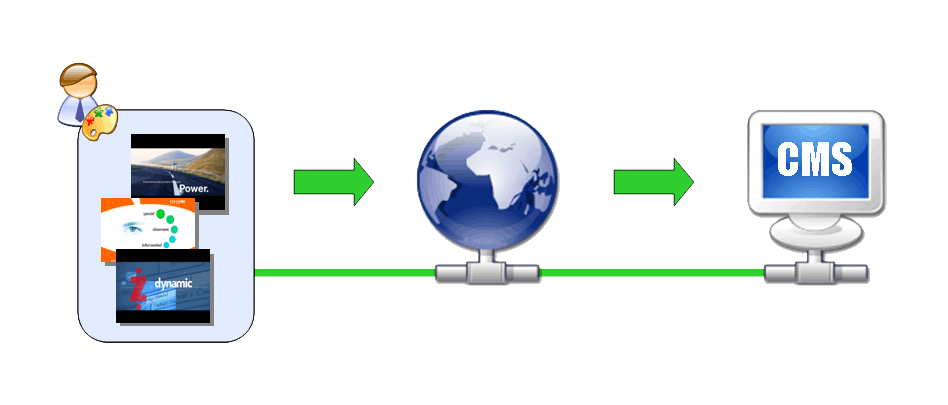
3These assets are then loaded into a special digital signage Content Management System (CMS). Most commonly, the CMS is a web-based service that can be accessed using a web browser.
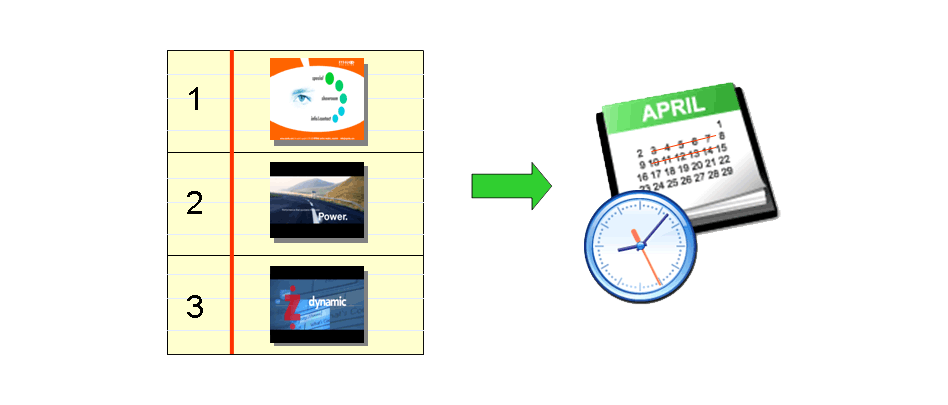
4Once the content assets are loaded into the CMS software, they can be scheduled into playlists -- instructions that tell each media player to show the content at a particular date and time.
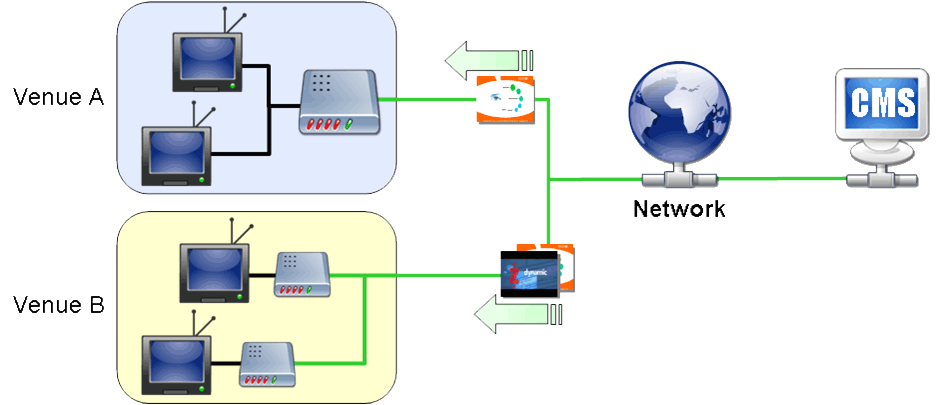
5When the content is scheduled into playlists, each media player retrieves the files that it needs, usually by downloading the files as compressed data over the network (for example, the Internet).
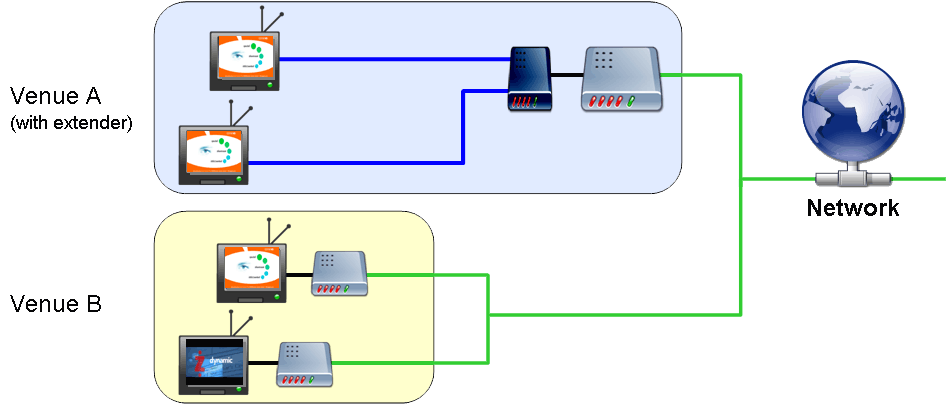
6The media players save these files to a hard drive, and when directed by the playlist, play the content on the appropriate screens via either a direct connection, or an extender system that lets the players reach screens in remote parts of the venue.
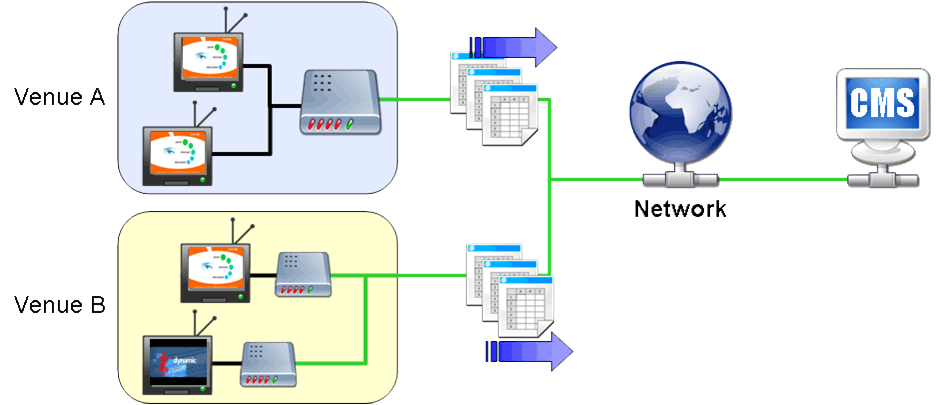
7As each player plays the content in its playlist, it generates a compliance log that is then sent back to the CMS system to confirm that everything is working properly.